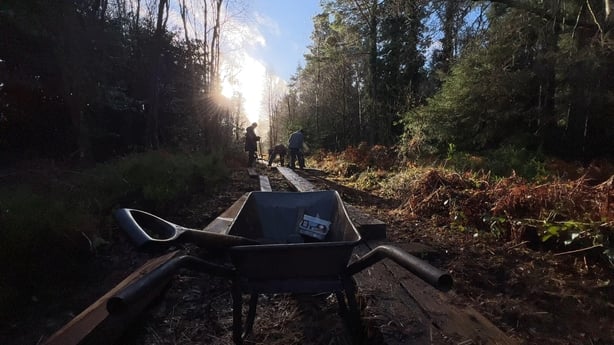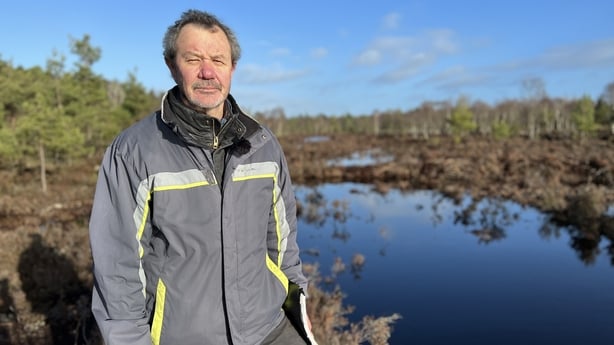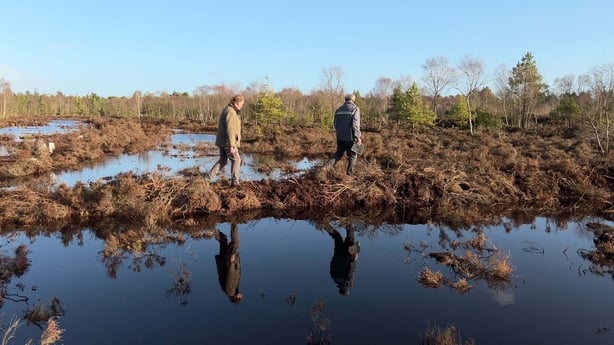It has been another week of troubling climate news.
We learned that three years of drought conditions in the Horn of Africa show no signs of letting up.
The International Energy Association told us that energy-related emissions of carbon dioxide hit a record high last year.
And we found out that a shortage of fruit and vegetables on Irish supermarket shelves is due to unseasonable weather conditions in countries like Spain.
No wonder many of us are feeling overwhelmed.
Fortunately, there are people and projects responding in real-time to the climate and biodiversity crises. We introduced you to 50 of them in our 'Climate Heroes' series of reports last year.

The volunteers who make up the Abbeyleix Bog Project don't see themselves as 'climate heroes' - but more on that later.
When we meet on a chilly Saturday morning, they are widening a stretch of path on the 200-hectare bog which lies on the edge of the Co Laois town.
"Since Covid, there's been a four or fivefold increase in the number of visitors here," Chris Uys tells me. "And now that they've discovered it, they're using it more and more often."
But the Abbeyleix Bog Project don't just build paths, they forge them too.
The project stemmed from the efforts of a local action group which was established in 2000 with the aim of protecting and restoring the local peatlands.
Restoration work began in 2009 and a year later Bord na Móna handed the bog over to the community to manage for a period of 50 years.
The project is now hailed nationally and internationally as a model for community-led peatland management and restoration.
Chris, who moved to Ireland from Namibia more than two decades ago, is keen to show me why.
"I always had a love for the environment, but I had never seen a bog before I came to Ireland. Once I saw this and understood what it was all about, it made sense and I got involved."

Chris has taken me away from the path and into an area of degraded cutaway bog where a new phase of restoration work began last year.
A network of peat dams and bund walls has been constructed which now retain large pools of water.
In their natural, soggy state, bogs can act as carbon sinks.
Globally, they hold more than twice as much carbon as the world's forests do, according to the United Nations Environment Programme.
"There's water everywhere here, but that's because of recent rainfall and it's just a first step," Chris explains. "The overall aim is to maintain the water table as close as possible to the surface, without too many fluctuations over the course of the year. That's what creates the conditions for the sphagnum moss."

According to Chris, sphagnum moss is "the real climate hero of Irish bogs and peatlands".
The tiny, colourful plant is excellent at sequestering carbon.
And it has been making a comeback on the key raised bog at Abbeyleix.
"When the first ecotope survey of the raised bog area was carried out in 2009, about 1.5% of it qualified as 'active raised bog'. That means it is actively growing. Eleven years later in 2020, we did a third survey and you could see the progression. We are now on 13.5% active raised bog.
"We have also seen that there was nearly a 52% reduction in emissions from that raised bog area within those 11 years. That equates to almost 100 cars being taken off the road immediately."

Chris believes this coupling of scientific research and community resolve is a winning combination.
"None of this would have been possible without the help, support and collaboration from our partners, volunteers and the local community. The lesson is, yes, communities can make a big difference. We can't change climate change immediately with a project like this, but we can look after the natural environment. And once you look after the natural environment, biodiversity increases. And once you do that, you help to lessen climate change. They are the small increments you can do. It definitely works."
All over Ireland people are stepping up to tackle climate change and protect the environment. If you have a story to tell, we would love to hear it. Email: yournews@rte.ie







